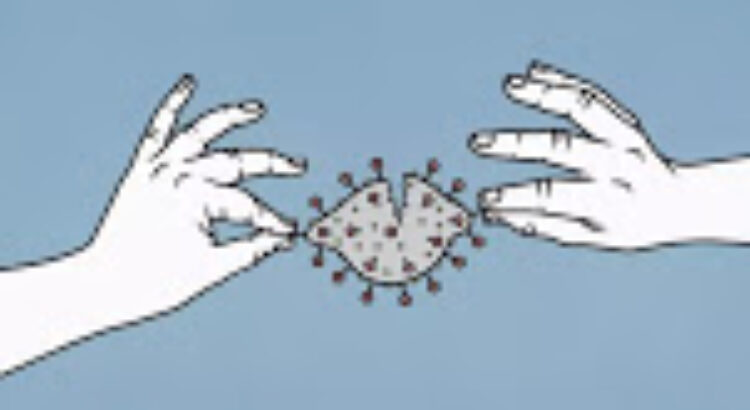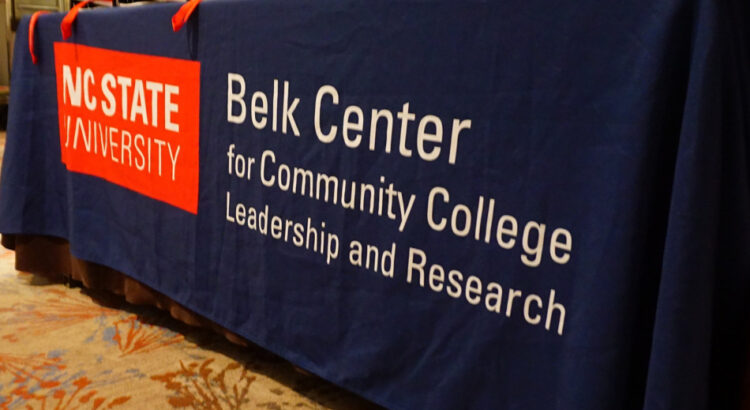Por: Edgar Isch L.
Por décadas se presentó a Estados Unidos como ejemplo de democracia avanzada. Todos los medios propagandísticos sirvieron para ese fin y se reforzaba por la idea de elecciones libres y la inexistencia de golpes de Estado liderados por fuerzas militares, lo que en América Latina servía para explicar que “allá no hay golpes porque no hay embajada norteamericana”.
Aquí ya se ve la primera debilidad del “espíritu democrático” de las élites de Estados Unidos: apoyaron siempre las peores dictaduras, los golpes más sangrientos, las guerras de dominación simuladas como guerras civiles, siempre que fueran útiles a sus intereses.
Pero hacia adentro, el hecho es que lograron un consenso que destruyó la promesa de modernidad inspirada en la Revolución Francesa: igualdad, libertad y fraternidad. Colocando la libertad individual como el único rasgo sobreviviente, que incluye libertad de expresión, de voto y otras, se desechó la igualdad y la fraternidad desde el lado oficial. Por supuesto, en su vida cotidiana la mayoría del pueblo trabajador expresaba esas características, se muestra solidario y comprometido, e incluso se mostraba muchas veces ingenuo.
La igualdad fue el mayor mito. Igualdad ante la Ley, pero se trata de un régimen teocrático en el que en actos públicos se jura ante la Biblia, en el que en siete Estados se prohíbe a los ateos ser profesores o funcionarios públicos, y sufren discriminación en el ejército, si logran ingresar.
El 2 de octubre de este año, el servicio de inmigración establece en su guía de políticas que un miembro a un partido comunista no puede ser admitido como ciudadano porque “es incompatible con el juramento de lealtad a los Estados Unidos”, lo cual ataca también a los nacidos allí, que son discriminados igualmente en una serie de empleos si se los identifica como comunistas (pero si nacionalizaron a científicos y colaboradores del gobierno de Hitler, sin ningún problema).
Se podría seguir señalando las brutales diferencias entre el 1% de millonarios en el poder y el 99% de “clase media” y pobres. Donald Trump es un ejemplo de como muchos de los millonarios ni siquiera pagan impuestos, pagan por no ser reclutados, con dinero burlan los mecanismos de ingreso a las universidades o tienen un sistema de salud negado para las mayorías. De manera que el principio democrático de igualdad, al menos ante la Ley, no es muy defendible.
A confesión de parte
 En 2013 el expresidente de Estado Unidos Jimmy Carter y su fundación para la “democracia y los derechos humanos”, expresaron abiertamente: “En la actualidad Estados Unidos no tiene una democracia que funcione», según recogió el diario alemán Der Spiegel y varios otros documentos. Señaló como factores muy graves la excesiva influencia del dinero en las campañas electorales, donde los ricos compran los compromisos de los candidatos, las normas electorales confusas y la invasión a la privacidad de los organismos de seguridad.
En 2013 el expresidente de Estado Unidos Jimmy Carter y su fundación para la “democracia y los derechos humanos”, expresaron abiertamente: “En la actualidad Estados Unidos no tiene una democracia que funcione», según recogió el diario alemán Der Spiegel y varios otros documentos. Señaló como factores muy graves la excesiva influencia del dinero en las campañas electorales, donde los ricos compran los compromisos de los candidatos, las normas electorales confusas y la invasión a la privacidad de los organismos de seguridad.
Tras trabajar en todo el mundo pobre, este año el Centro Carter decidió monitorear las elecciones norteamericanas. Señalan abiertamente que: “Aunque hace tiempo que EE.UU. no ha estado a la altura de los estándares electorales internacionales en asuntos clave, hasta hace unos 10 años no habríamos concluido que la calidad de su democracia y las elecciones iba en retroceso”… “Dada la escala de los problemas hoy en día (la profunda polarización, la falta de confianza en las elecciones, los obstáculos a la participación de grupos minoritarios y otras injusticias raciales, además de la pandemia de la Covid-19, hemos decidido que el centro intente mejorar las elecciones en casa…”
La denuncia a su sistema electoral
El derecho universal al voto es un rasgo de un sistema democrático. Pero en Estados Unidos no se cumple. Históricamente se han construido trabas para impedir la igualdad del voto y la participación. Por ejemplo, cuando la reforma constitucional (Enmienda) número 15 dio derecho al voto a los afroamericanos, rápidamente se implementó un impuesto electoral que impedía la participación de los pobres, o controles de ser alfabetizado, igualmente a los que sometían solo a los pobres.
Aún con las reformas logradas por el movimiento por los derechos civiles en 1965, no supusieron que terminen los impedimentos para ir a votar. Y hay varias como inscribirse para constar en el padrón o que la elección sea en martes, poniendo a los trabajadores en una disyuntiva de asistir o ir a trabajar.
El año 2000 ganó George Bush hijo a pesar de que el candidato Al Gore tuvo más votos. Además, para beneficiar al conservador, se suspendió el reconteo de votos en La Florida gracias a que los republicanos tenían mayoría en la Corte Suprema de Justicia, lo que hace que la justicia tampoco guarde principios básicos de independencia, sino que está atada a los dos partidos.
Entonces, el reconocido cineasta Michael Moore publicó un libro que trata de estos y otros temas de la injusticia social en Norteamérica. Lo tituló “Estúpidos hombres blancos” y en él resalta también mecanismos de fraude que son una constante en USA. En tono realista y satírico a la vez, dirá: “He cursado una solicitud personal al secretario general de la ONU, Kofi Annan, para que atienda nuestra petición. Ya no somos capaces de gobernarnos ni de celebrar elecciones libres y limpias. ¡Necesitamos observadores, tropas y resoluciones de la ONU!”
Una forma es la Ley, en gran parte de estados, para que exconvictos jamás puedan votar, sin importar la causa por la que cayeron presos (¿robar un pan?). De esa manera, dice Moore, los Bush pagaron 4 millones de dólares para impedir a su presencia, especialmente del 31% de negros y miles de latinos pobres de La Florida, como resultado del sistema racista de las cortes y policía norteamericana.
Claro, los que llegan a la cárcel y no los asesina la policía antes de arresto, como ha pasado múltiples veces este año. Pero lo hicieron también con los que nacieron el mismo día, tenían nombres parecidos o un 80% de coincidencia.
 Y miles más fueron impedidos en votar por tener coincidencias con exconvictos de otros estados que “pudieron” haber ido a vivir en La Florida Su impedimento para votar fue legal, pero nada democrático.Luego vinieron irregularidades al recibir una mayoría de votos defectuosos desde el extranjero, anular papeletas enviadas correctamente por correo.
Y miles más fueron impedidos en votar por tener coincidencias con exconvictos de otros estados que “pudieron” haber ido a vivir en La Florida Su impedimento para votar fue legal, pero nada democrático.Luego vinieron irregularidades al recibir una mayoría de votos defectuosos desde el extranjero, anular papeletas enviadas correctamente por correo.
Ese es un ejemplo de lo dudosamente democrático del sistema. Otro caso es lo que sucedió en la elección de Trump, aunque Hillary Clinton tuvo 3 millones de votos más, pero perdió. El mecanismo electoral hace que, con excepción de dos estados, quien gana en un Estado, aunque sea con un voto, lleva todos los votos electorales, es decir los representantes que realmente nombran al presidente.
Se desconoce de esta manera a las minorías y el voto deja de tener representación igual. Es conocido el siguiente ejemplo: en California hay 57 veces más población que en Wyoming, pero solo nombra 18 veces el número de electores. Esto demuestra que no hay igual peso del voto de cada ciudadano, pero es un mecanismo que brinda más importancia electoral a las zonas con menor diversidad humana y de pensamiento, donde dominan los políticos más conservadores. Y de paso, las zonas con menor educación y mayor ignorancia.
Una campaña para garantizar el gobierno de los millonarios
La política de Estados Unidos está construida para tener un régimen de dos partidos de las clases dominantes turnándose en el poder. Los republicanos, generalmente más conservadores en temas fiscales (impuestos) y sociales, y los demócratas que sostienen ciertos derechos y la intervención del Estado en algunos asuntos.
:quality(85)//cloudfront-us-east-1.images.arcpublishing.com/infobae/T32JFWUDBYM3DD62RGMEBHSW4Y.jpg) En lo demás, son casi iguales y, para su patio trasero, como llaman a América Latina, prácticamente son los mismo. Demócratas y republicanos han sostenido el infame bloqueo a Cuba, atacan a pueblos como Venezuela, se han entrometido en la política de los gobiernos de la región, han organizado golpes de Estado militares o como el último en Bolivia, buscan explotar al máximo nuestras riquezas naturales.
En lo demás, son casi iguales y, para su patio trasero, como llaman a América Latina, prácticamente son los mismo. Demócratas y republicanos han sostenido el infame bloqueo a Cuba, atacan a pueblos como Venezuela, se han entrometido en la política de los gobiernos de la región, han organizado golpes de Estado militares o como el último en Bolivia, buscan explotar al máximo nuestras riquezas naturales.
Pero hay otros partidos y candidatos, solo que la “democracia” norteamericana impide conocerlos. Al momento, según la cadena de noticias BBC de Londres, hay 1.200 candidatos a la presidencia que no son tomados en cuenta. La mayoría de ellos o ellas solo consta en la papeleta de uno o dos estados, en varios otros, los electores deben conocer de su candidatura y escribir el nombre de su preferencia para que el voto sea tomado en cuenta y, finalmente, hay otros Estados en los que no existe ninguna forma de darles el voto.
¿Pero cómo hacerse conocer? Muy difícil si se considera que se estima que una campaña requiere de mil millones de dólares y que estos deben venir solo de fuentes privadas. Es así como los grandes empresarios y financistas apuestan a los dos caballos, entregando recursos a ellos para comprar sus posteriores acciones gubernamentales.
Por otra parte, para participar en los debates presidenciales el requisito previo es que los dos partidos lo acepten y esto solo sucedió cuando un megamillonario(Ros Perot en 1992) presentó una candidatura independiente y no tenía ninguna oportunidad de ganar. Para los demás, su participación está negada.
Así, puede parecer que el pueblo elige, pero las cartas ya están marcadas.
En pocas palabras, no hay democracia social y no hay democracia electoral. ¿Será que, con diferencias de forma, nuestro país se parece? Claro, uno y otro está pasando el capitalismo, periodo histórico que terminará por la acción de las clases trabajadoras, en Estados Unidos, el Ecuador y el mundo. Las elecciones, entre otras cosas, demuestran la ausencia de una verdadera democracia.
* Académico y ex ministro de Medioambiente de Ecuador. Asociado al Centro Latinoamericano de Análisis Estratégico (CLAE, www.estrategia.la)
Fuente e imagen: http://estrategia.la/2020/11/03/estados-unidos-o-la-democracia-simulada/








 En 2013 el expresidente de Estado Unidos Jimmy Carter y su fundación para la “democracia y los derechos humanos”, expresaron abiertamente: “En la actualidad Estados Unidos no tiene una democracia que funcione», según recogió el diario alemán Der Spiegel y varios otros documentos. Señaló como factores muy graves la excesiva influencia del dinero en las campañas electorales, donde los ricos compran los compromisos de los candidatos, las normas electorales confusas y la invasión a la privacidad de los organismos de seguridad.
En 2013 el expresidente de Estado Unidos Jimmy Carter y su fundación para la “democracia y los derechos humanos”, expresaron abiertamente: “En la actualidad Estados Unidos no tiene una democracia que funcione», según recogió el diario alemán Der Spiegel y varios otros documentos. Señaló como factores muy graves la excesiva influencia del dinero en las campañas electorales, donde los ricos compran los compromisos de los candidatos, las normas electorales confusas y la invasión a la privacidad de los organismos de seguridad.

:quality(85)//cloudfront-us-east-1.images.arcpublishing.com/infobae/T32JFWUDBYM3DD62RGMEBHSW4Y.jpg) En lo demás, son casi iguales y, para su patio trasero, como llaman a América Latina, prácticamente son los mismo. Demócratas y republicanos han sostenido el infame bloqueo a Cuba, atacan a pueblos como Venezuela, se han entrometido en la política de los gobiernos de la región, han organizado golpes de Estado militares o como el último en Bolivia, buscan explotar al máximo nuestras riquezas naturales.
En lo demás, son casi iguales y, para su patio trasero, como llaman a América Latina, prácticamente son los mismo. Demócratas y republicanos han sostenido el infame bloqueo a Cuba, atacan a pueblos como Venezuela, se han entrometido en la política de los gobiernos de la región, han organizado golpes de Estado militares o como el último en Bolivia, buscan explotar al máximo nuestras riquezas naturales.






 Users Today : 6
Users Today : 6 Total Users : 35460785
Total Users : 35460785 Views Today : 10
Views Today : 10 Total views : 3419997
Total views : 3419997